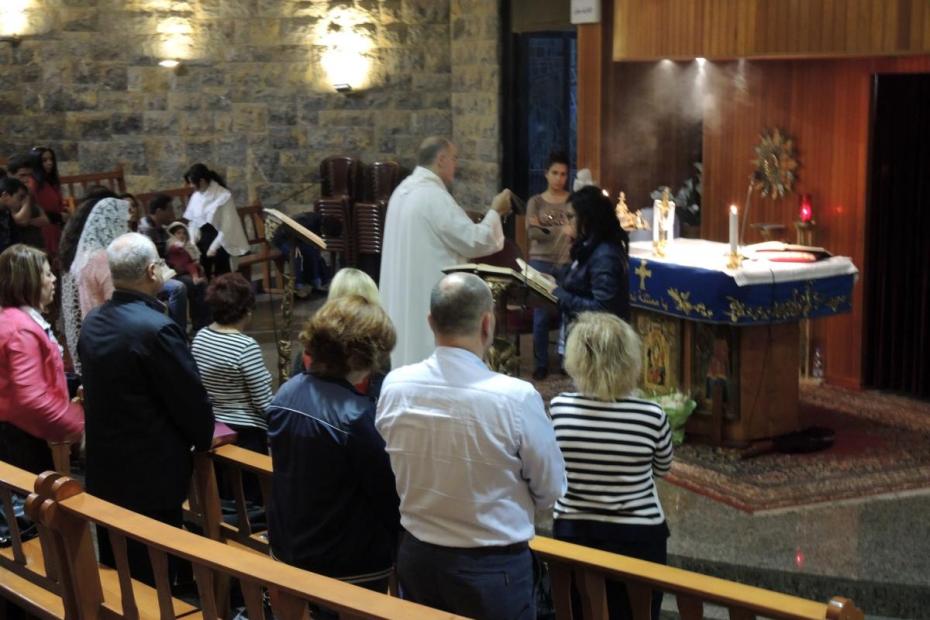Maronite Catholicism encompasses a whole range of traditions and practices that give meaning and texture to the faith. The Qurbono,1 as the Maronite Mass is properly called, is the primary official form of prayer of the church, and a fundamental source of Maronite identity. It bears many similarities to other Eastern and Western Catholic liturgies, but has its own particular elements that make it distinctive.
Having developed from the ancient traditions of Antioch, the Qurbono was for centuries celebrated in Syriac, an Aramaic language related to the language of Jesus. Though some prayers are still said in Syriac, today most of the liturgy in the Middle East is celebrated in Arabic, the first language of almost all Maronites there. In the diaspora, the local vernacular – English, Portuguese, French or Spanish – replaces Arabic. The liturgy was revised in 1992, with the aim of undoing some of the Latinization of liturgical practice that had come into force after the Council of Trent.
A Maronite Mass, or Qurbono, is celebrated at a chapel at Our Lady of Lebanon Shrine in Keserwan, Lebanon, on May 9, 2015.
The Maronite Qurbono is celebrated at an altar that is open to the church, not, as in the case in some Eastern liturgies, behind a screen. In that sense, it seems more Western in comparison to some other Eastern liturgies. The celebrant typically faces the people from behind the altar. Other elements make clear the liturgy’s Syriac origins: the Syriac hymns that are integral to the liturgy, the repeated use of incense, the hand cross that the priest holds and blesses with during many parts of the liturgy. Men, women and children mix in the pews, rather than having separate sides for each gender.
In general, the style of liturgy and music focuses on solemnity more than celebration, at least as celebration might be interpreted in many contemporary cultural contexts. “The instrumental tradition in the Maronite Church is limited to four instruments: double cymbals, large cymbals, triangle, and flabelles [a metal, ornamented disk at the end of a pole, whose small bells chime when it is turned]. The... organ has more recently begun to be used.” 2
The liturgy has two main parts: the Service of the Word, and the anaphora (known in the Roman rite as the Liturgy of the Eucharist). The Service of the Word, while it has the same structure of readings as the Latin rite, is longer and more elaborate than in the Western liturgy, with more hymns. Both Service of the Word and anaphora include a number of hymns in the vernacular and in Syriac. There are more than 70 anaphoras in the Syriac tradition, and as many as 20 are typically used today. The sign of peace extends from altar and chalice out to people who pass it on. Communion is by intiction, by dipping the host into the consecrated wine, therefore not in the hand.
Read a more developed explanation of the Maronite Qurbono. See a helpful chart comparing Roman Rite and Maronite liturgical seasons. View the text of the Qurbono for each of these seasons.
- 1It is also sometimes spelled Qorbono when written using a Latin alphabet.
- 2In historical context, the traditional instruments, in their brassiness, were not meant to be somber, but to communicate “feasting,” “joy” and “pleasure.” Ray Jabre Mouawad, Les Maronites: Chrétiens du Liban (Turnhout, Belgium: Brepols, 2009), 146, (author’s translation).
